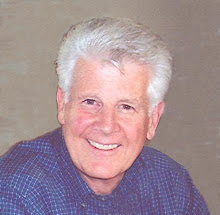Valdez is located on a small estuary that opens out into Prince William Sound. This is the terminal for the Alaska Pipeline. The town's population is 4,498. It is really a fjord at the base of the Chugach Mountains, which rise 5,000 feet right above the town. Although people have been around the area for a long time, it got its start, of course, during the Gold Rush. The original town grew up at the base of the Valdez Glacier and the stampeders who tried to go up over the glacier that first winter, some 4,000 of them, didn’t make it. Crevasses, snow blindness, exhaustion and scurvy were among the things that stopped them.
The town was named by Spanish explorers in 1790, and the pronunciation of Valdes became VAL-DEEZ when the gold rushers got there. The Spanish American War was going on, and they mispronounced it out of disrespect.
Most of us think of the Exxon Valdez that ran aground on Bligh Ree in March of 1989. The spill was 11 million gallons. (And, trivia fans, Bligh Reef was named after Captain Bligh of Bounty fame.) The Reef is 90 miles off the coast from Valdez.
Ironically, there is little in the town to suggest affiliation with the oil spill. In fact, the focus of the town museum is on 1964, when a 9.2 earthquake struck Alaska, with the epicenter very near here.
The original town was built at the foot of the glacier on silt and sediment from the glacier.When the quake hit, this material liquefied and caused an underwater landslide. The town was demolished and the Army Corps of Engineers condemned what was left. The town was relocated 4 miles down the waterfront to solid land. And the old town was burned.
Our campsite is a very short distance from the oil terminal. It is not a refinery, but just a storage area where crude oil is loaded onto tankers. Across the water, in downtown Valdez, is a view from the dock straight across to the oil terminal.
There is nothing to show in pictures of the town. They are very proud of it, having lost everything to the earthquake. Those who survived designed and laid out the town plan. It looks like a 1960's town. They don't talk about the Exxon Valdez, I think, because there are still too many people around who were so horribly affected by it, and they don't want to be constantly reminded of it. And they don't want to be known for it. From what we have read, there are too many open wounds to have it be a prominent topic of discussion.
So, these people have had their share of trouble. This is now a tourist area, big on fishing, both recreational and commercial, and of course, the terminus for the pipeline and large tankers that come to take the unrefined oil, most of which goes to other countries.
When we arrived, our neighbors were canning pink
 salmon they had just caught. They were outdoorsmen from Michigan and spend a lot of time hunting and fishing. They gave us a side of salmon that John cooked on the grill.
salmon they had just caught. They were outdoorsmen from Michigan and spend a lot of time hunting and fishing. They gave us a side of salmon that John cooked on the grill. 
This is the view from my window in the late, late evening. Like 11:30 And that's the sun, not the moon!





.jpg)





No comments:
Post a Comment